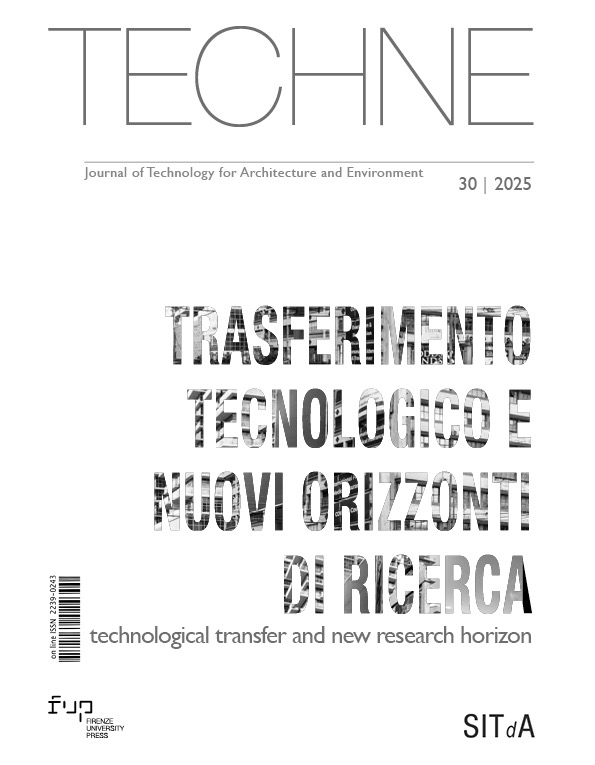“Errante”: “Errante”: a collaborative project for the socio-cultural activation of Internal areas
Published 2025-11-07
Keywords
- Community,
- Connection,
- Design Thinking,
- Prototype for Commons,
- Small Scale Architecture
How to Cite
Copyright (c) 2025 Roberto Ruggiero, David Giacomelli, Matteo Giacomelli

This work is licensed under a Creative Commons Attribution 4.0 International License.
Abstract
Val di Fiastra, located in the upper Macerata area, exemplifies a fragile ecosystem. It is a seismically vulnerable region experiencing a steady demographic decline. This essay presents the “Errante” project, one of the regeneration measures proposed by the “Qui Val di Fiastra” initiative, which was awarded the PNRR 2023 Borghi Call. The project is the result of a collaboration among the INABITA laboratory, local organisations, and the University of Camerino. Errante serves as a mobile infrastructure to promote socio-cultural activities. By integrating the principles of participatory design with rapid prototyping methodologies, which have been “transferred” from the university to the community, Errante establishes a unique approach for empowering territories in fragile contexts.
Downloads
References
- Barbera, F. and De Rossi, A. (2021), Metromontagna. Un progetto per riabitare l’Italia, Donzelli Editore, Roma.
- Barca, F., Casavola, P. and Lucatelli, S. (2014), “Strategia Nazionale per le Aree Interne. Definizione, Obiettivi, Strumenti e Governance”, Materiali Uval – Dipartimento per lo Sviluppo e la Coesione economica, n. 31. Available at: https://politichecoesione.governo.it/it/documenti-ed-esiti-istituzionali/documenti-del-nucleo/materiali-uval/documenti/numero-31-strategia-nazionale-per-le-aree-interne-definizione-obiettivi-strumenti-e-governance/ (Accessed on 30.06.2025)
- Barca, F. (2009), An agenda for a reformed cohesion policy: A place-based approach to meeting European Union challenges and expectations (Barca Report), Brussels: European Commission, Directorate-General for Regional Policy. Available at: https://ec.europa.eu/regional_policy/archive/policy/future/pdf/report_barca_v0306.pdf (Accessed on 30.06.2025)
- Barca, F. (2018), Politica di coesione: tre mosse. IAI Documents. Brussels: European Parliament. Available at: https://www.iai.it/sites/default/files/barca.pdf (Accessed on 30.06.2025)
- Brown, J. and Isaacs, D. (2005), The World Café: Shaping Our Futures Through Conversations That Matter, Berrett-Koehler Publishers, San Francisco.
- Burry, J. and Burry, M. (2016), Prototyping for architects. Real building for the next generation of digital designers, Thames & Hudson, London.
- Caruso, I. and Cristallo, V. (2020), Beachlife design. Per un repertorio di temi e prodotti, Il Poligrafo, Padova.
- Escobar, A. (1995), Encountering development: the making and unmaking of the Third world, Princeton University, Princeton, NJ.
- Karlsen, J. and Larrea, M. (2016), Territorial Development and Action Research Innovation Through Dialogue, Taylor & Francis, Milton Park, UK DOI: https://doi.org/10.4324/9781315612058
- Lees‑Maffei, G., 2009. “Jean Prouvé. The Poetics of the Technical Object”, Design & Culture, Vol. 1, n. 1, pp. 126-128. Available at: https://www.tandfonline.com/doi/pdf/10.2752/175470709787375698 (Accessed on 30.06.2025) DOI: https://doi.org/10.2752/175470709787375698
- Lucatelli, S., Luisi, D. and Tantillo, F. (2022), L’Italia lontana. Una politica per le aree interne, Donzelli Editore, Roma.
- Giacomelli, M. and Calcagni, F. (2022), Borgofuturo. Un progetto locale per le aree interne, Quodlibet, Macerata. DOI: https://doi.org/10.2307/j.ctv2gvdn46
- Ingold, T. (2019), Making, Raffaello Cortina Editore, Milano.
- Magnaghi, A. (2010), Il progetto locale. Verso la coscienza di luogo, Bollati Boringhieri, Torino.
- Nacamulli, R. Prus, I. (2022), Il design thinking e la cultura dell’innovazione, Egea, Milano.
- Ortega, L. (2019), The Total Designer: Authorship in the Architecture of the Postdigital Age, Actar, Barcelona.
- Pellizzoni, L. and Osti, G. (2003), Sociologia dell’ambiente, Il Mulino, Bologna.
- Perriccioli, M., Ruggiero, R. and Salka, M. (2021), “Ecologia e tecnologie digitali. L’architettura alla piccola scala come luogo di connessioni”, Agathon, International Journal of Architecture, Art and Design, 10 (21), pp- 36-45. Available at: https://dx.doi.org/10.19229/2464-9309/1032021 (Accessed on 30.06.2025)
- Pittau, M.G., Zelli, R. and Gelman, A. (2010), “Economic Disparities and Life Satisfaction in European Regions”. Social Indicators Research, Vol. 96, n. 2, pp. 339-361. Avalaible at: https://link.springer.com/article/10.1007/s11205-009-9481-2 (Accessed on 30.06.2025) DOI: https://doi.org/10.1007/s11205-009-9481-2
- Ruggiero, R. (2023), “Education in future tense. A phigital experience in the field of architecture”, in AA.VV. Transformative Teaching. Focus on Pedagogy 2022. Atti della conferenza internazionale Transformative Teaching, 15-17 November, organizzato da: Florida State University (USA), University of Dundee (UK), Zayed University (United Arab Emirates), AMPS Proceedings Series, pp 331-345. Avalaible at: https://amps-research.com/event/teaching/schedule/art-and-design-2/education-in-future-tense-a-phigital-experience-in-the-field-of-architecture/ (Accessed on 30.06.2025)
- Sanchez, J. (2021) Architecture for the commons. Participatory systems in the age of platforms, Routledge, Londra. DOI: https://doi.org/10.4324/9780429432118
- Sereni, E. (1961), Storia del paesaggio agrario italiano, Laterza, Bari.
- Tibbits, S. (Ed.) (2021), Autonomous Assembly. Designing for a New Era of Collective Construction. Architectural Design, Vol. 87, John Wiley & Sons, Oxford. Avalaible at: https://onlinelibrary.wiley.com/toc/15542769/2017/87/4 (Accessed on 30.06.2025) DOI: https://doi.org/10.1002/ad.2189
- World development Report (2009), Spatial Disparities and Development Policy, World Bank, Washington.






